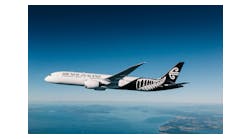July 29--All foreign airlines are now being advised to use a GPS system to guide landings onto the main runways at San Francisco International Airport, federal aviation officials said, a response to concern that some pilots for foreign carriers aren't adept enough at touching down manually.
The concern over what are known as "visual approaches" -- in which pilots do not rely solely on their cockpit instruments -- arose after the July 6 crash of Asiana Airlines Flight 214, which left three people dead and about 180 injured.
Since then, pilots for the South Korean airline and other foreign carriers have had more aborted landings than usual at SFO while attempting visual approaches, said the Federal Aviation Administration, which did not provide exact numbers.
Some aviation experts say pilots for foreign carriers can fail to master basic skills due to a reliance on automated instrument systems.
The result, starting last week, is a shift in landing protocol on runway 28L -- the intended destination of the Boeing 777 that crashed well short, clipping a seawall -- and the parallel runway 28R.
Typically, pilots would use visual approaches if the weather was clear, or they would use an instrument system known as a glide slope indicator to help them land.
However, the glide slope indicator has been out of service since June 1 due to an expansion project and is not scheduled to be available again until Aug. 22.
The GPS-based instrument system, known as RNAV, is an alternative, and the FAA decided to make the temporary change "out of an abundance of caution," the agency said Sunday in a prepared statement.
Foreign carriers are not obligated to use the system, but pilots typically accept assignments from air traffic controllers.
Jim Tilmon, a former commercial pilot and aviation consultant in Arizona, said the GPS landing system should be effective, as long as the pilots are skilled at using it.
But he said, "The best and most reliable instrument in the cockpit is supposed to be the captain -- his eyeballs and his experience. Apparently this is a weakness in some of the carriers -- they rely too heavily on their instrumentation. It's kind of like a kid today who wants to drive a car but doesn't know how to drive a stick shift."
The FAA also said Sunday that it is looking into an aborted landing by EVA Air, a Taiwanese carrier, at SFO on July 23 in which the plane approached the airport too low. When pilots abort landings, they circle around.
The Asiana Airlines crash is under investigation, and it's unclear exactly how its pilots -- who had been cleared for a visual approach -- tried to land. Federal investigators said the plane was flying far too slowly when it crashed, with the pilots reporting that they believed they had engaged an automatic throttle.
Demian Bulwa is a San Francisco Chronicle staff writer. E-mail: [email protected] Twitter: @demianbulwa
Copyright 2013 - San Francisco Chronicle




